 In the interest of full disclosure, I am not now, nor have I ever been, a fisherman. However, in the spirit of a man who many consider the greatest value investor of all time, Benjamin Graham[1] (the teacher, mentor, “hero” of Warren Buffett)
In the interest of full disclosure, I am not now, nor have I ever been, a fisherman. However, in the spirit of a man who many consider the greatest value investor of all time, Benjamin Graham[1] (the teacher, mentor, “hero” of Warren Buffett)

Benjamin Graham is considered by many (including Warren Buffett) to be the "father" of Value Investing. See the Appendix for some interesting sidelights regarding Graham's life.
during 2014 I kept my eye on two particular sectors:
1) Oil (the United States Oil Fund LP (USO))
2) Russia (the Market Vector Russia ETF Trust (RSX))
Each time one of those ETFs got hammered, I kept thinking: “Someday soon this decline will stop, the ETF will plateau (consolidate) and then it will begin edging back upward again… Each of these ETFs has a few basic fundamentals that provide a bedrock value below which the ETF should be a compelling buy.”
Were I to have found success in my effort to “discover” that bottoming price level, buy the ETF, and watch it climb…. that would have been classic “bottom fishing.”
Of course, bottom fishing is (at its root) merely following the oft-quoted investment advice of Baron Rothschild: “When there is blood on the street, I am buying.”
Earlier during the past year, when the infamous Russian President, Vladimir Putin,

The infamous President of Russia -- Vladimir Putin. (It has been fun to imagine captions for this image, such as: "If you don't do as I tell you, you'll feel the sharp end of my fist!")
was saber rattling in the Crimean region and along the Western Ukraine/Eastern Russian border, there literally was “blood in the streets”. But it is almost as emotionally and morally challenging to invest in the economy of a country run by a leader formed and shaped[2] by the KGB as it would be to invest in whatever economy might still exist in North Korea[3].
I confess to not being anything close to a “star” investor. But I will pat myself on the back for having the wisdom during 2014 to keep my money out of RSX and USO! Let me show you why:
As you all know, the financial press and stock commentators have been making the continuing tumble in oil prices (and USO) sound as though it has been unprecedented and (at least during late November and all of December) might be “bottomless”.[4]
So when I went to create a price chart for USO and RSX, I expected USO’s chart to be worse than it was and RSX’s to be better than it was!
However, that proves how misleading press coverage can be, because as you can see below, during the 2014 calendar year, USO lost 40.52%… but RSX sank much lower – falling by 47.62%!
Given the above, the question that intrigues me … the quest I want to tackle (with you looking over my shoulder) is this:
How can we get a handle upon what “bedrock value” might be in each one of these ETF’s?
First we will look at USO (and XLE).
I have been reading and listening quite intently since July to the story surrounding the collapse in oil prices. Quite frankly, I was not bowled over by any particular analysis… at least until I stumbled this past week across an astute and incredibly informative analysis by Nick Kalivas, who is a senior equity product strategist at Invesco PowerShares.[5]
Kalivas provided an outstanding table of West Texas Intermediate Oil (WTI) price declines since October of 1985[6].
During this extended period, WTI declined by at least 40% (from closing month high to closing month low) a total of five times. Note that Kalivas only had the December 23rd (2014) closing price at hand ($56.52) so he used that for his calculation of the most recent decline. I was able to secure the December 29th price from the U.S. Energy Information Administration (USEIA)… so I supplement his data with the following.
Then Kalivas proceeded to offer the following observations:
1) AVERAGE/MEDIAN DURATION OF DECLINES: The average and median lengths of time required to complete these declines (and reach a bottom) have been 10.3 months and 8.0 months (respectively). Kalivas’ obvious deduction is that if the current decline follows prior patterns, a “bottom” might be more likely to come at some point during January or February of 2015.
2) AVERAGE/MEDIAN PERCENT OF DECLINE: The average and median magnitude of these declines has been 55.1% and 54.1% (respectively). Once again, if the magnitude of the current decline is destined to be “average”, we could expect at least an additional $5.06 to $6.11 decline beforea “bottom” was found (somewhere between $48.40 and $47.35).
3) THE MOST PARALLEL FUNDAMENTALS: Kalivas opines that the decline between 1985 and 1986 bears the closest resemblance to the present decline on a fundamental basis because, in both instances, the primary driver for a decline was a huge surplus of oil (excess supply vis-a-vis demand). That supply/demand dynamic drove prices down over 63% in 1985-86. If the current market takes a similarly dim view of oil this time, that would result in a “bottom” for WTI of just $38.98!! (Yikes!)
Yes, one could also point to the decline of over 70% some six years ago – however, remember that the overarching economic dynamic driving that plunge was a global financial crisis[7] much greater than most experts see developing over the near-term horizon!
A SUMMARY OF THIS 30-YEAR HISTORY: If (a big “if”) the present decline falls within the parameters of these declines during the past 30 years, it could stretch into the February to April, 2015 time frame… and take WTI prices down to a “bottom” between $48.40 and $39.00.
OTHER TOOLS TO FACILITATE “BOTTOM FISHING”:
As those who follow the Graham/Buffett school of investment thought know, measures of “Relative Valuation” can be an invaluable tool in discerning advantageous parameters for the investment of new funds!
In his article, Kalivas was equally helpful on that score, offering these relative valuation graphs:
It should surprise no one that we are close to the very bottom of the most recent 25-year range on the “Price to Book” scale. Note that this particular metric is an extremely dynamic one… being powered by changes in both “price” and “book value” (the value of a company’s asset base). It goes without saying that both of those components have been barreling downward during the past 6 months. It might help you to know that during the final week of December, the P/B Ratio for the S&P 500 Energy Sector stood at 1.78… higher than the recent low on December 15 of 1.605. It is also helpful to know that the average P/B Ratio since 1990 has been 2.39! [8]
If we include an additional 100 energy companies (based on descending market capitalization sizes), we have the S&P 600 Energy Sector group – with an aggregate market cap a bit lower than represented in the first graph. However, the pattern is much the same (as you can see).
For your reference, during the final week of December, the P/B Ratio for the S&P 600 Energy group stood at a lowly 0.923… higher than the recent low on December 15 of 0.78. Further, the average P/B Ratio since 1995 has been 2.02!
INVESTOR TAKEWAY:
It is always perilous to assume that one knows “where the bottom” is for any given investment. It is even more perilous to represent to others that you know where that “bottom” is actually located!
Since I freely confess that I am not prescient, I will not pretend to know where the bottom in oil prices is presently located. However, I can say with complete confidence that we are much closer to a bottom than we are to a top.
For those who are drawn to the possibility of bottom fishing at this level… or even lower levels, let’s review some possible oil investment vehicles:
A) The two primary choices[9] are as follows:
1) USO: This ETF is invested 100% in Oil Futures (WTI). So it is a play on the commodity itself.
2) XLE: Select Sector SPDR Energy Fund. This ETF is composed of oil-related companies… so it is not a direct play on “Oil” itself. Below is a list of the “Top Ten” holdings within XLE (those stocks constituted over 62% of all the ETF’s invested assets):
What is especially notable about XLE is that, for the calendar year 2014, it was the only State Street Global Advisors ”Select Sectors” ETF to offer a negative return (down 10.3%).
However, it has been obvious that a significant number of investors had hoped late in 2014 that this ETF had bottomed.
There was a short-lived rally that started during the middle of October… up to $88.50/share … but then it tumbled down to $73.36/share…
A similar “bottom fishing” rally started in the middle of December… moving up to over $80/share…. as investors pushed over $2.1 billion of new assets into the fund, just in December alone.
However, as we saw on January 5th, that rally more than stalled – with XLE tumbling down to $76.24.
Obviously, December XLE investors were “early”. But their entries were not predicated merely upon blind “hope”. As you have surely gathered by now, there have been several metrics that hinted at encouraging signs of sound “valuation”. Among those signs was an article written by Constance Gustke and published by CNBC on December 31st [“Show a little guts: Time to tiptoe back into energy stocks”]:
“With a hefty discount to the price-to-earnings ratio of the S&P 500, energy stocks look enticing. Consider this factoid from S&P Capital IQ: There have been six times since 1990 that the S&P 500 Energy Index traded at or below its current “relative strength” reading.”
“Over a 24-month time frame, the S&P 500 Energy Index was positive six of those six times and beat the S&P 500 five of six times. It also outpaced the S&P 500 by an average 16.2 percentage points. In comparison to the last nine historical oil price shocks, there have only been two times when energy has been cheaper on a relative basis when oil prices troughed: in the wake of 9/11 and in late 2006.”
B) Among other possible vehicles through which to invest in an oil rebound (whenever it is that one might feel we’ve reached the “bottom”) are these from PowerShares (offered in large part in gratitude for Nick Kalivas’ outstanding insights offered in his article (referred to earlier). The first two ETFs are referred to as “Smart Beta” funds — focusing upon a specific subgroup within the oil sector represented by an Index that is not weighted by “market cap”:
1) PowerShares Dynamic Energy Exploration & Production Portfolio (PXE): this ETF invests in companies involved within the exploration and production of oil. The criteria used for inclusion within the index include: price momentum, earnings momentum, quality, management action, and value.
“Top Ten Holdings” include:
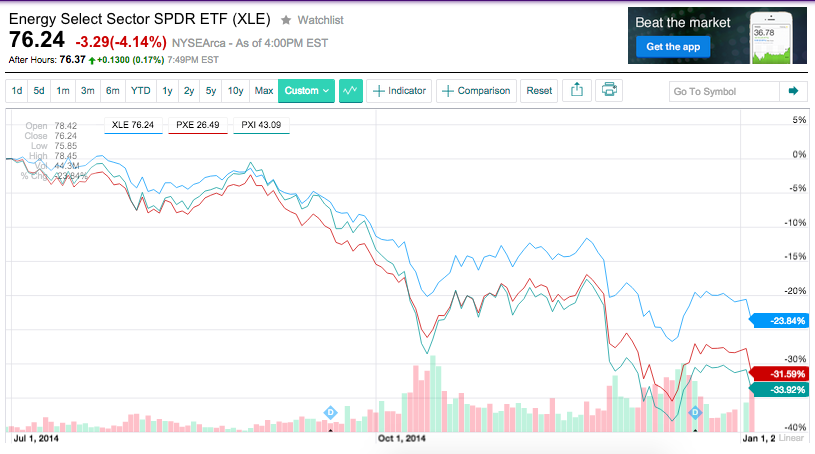
While PXE and PXI excelled during the first 6 months of 2014, XLE outperformed both of them after July 1st. The reason was the greater financial strength (and sustainability) of larger cap energy stocks. XLE has a much higher average market cap than either PXE or PXI.
2) PowerShares DWA Energy Momentum Portfolio (PXI): this ETF invests in oil-related stocks that demonstrate relative price strength.
“Top Ten Holdings” include:
In addition, if you are drawn toward potentially more rewarding (but also significantly more volatile and risky) smaller capitalization companies, you can opt for:
PowerShares S&P SmallCap Energy Portfolio (PSCE).
We will take a look at Russian equities next time!
DISCLOSURE: The author does not currently own USO, XLE, RSX, or any of the other ETFs mentioned above. Nothing in this article is intended as a recommendation to buy or sell anything. Always consult with your financial advisor regarding changes in your portfolio – either subtractions or additions.
APPENDIX: Sidelights within the life of Benjamin Graham
Graham demonstrated enthusiasm for skiing, tennis and dancing. He could translate Portuguese, Greek and Latin. He was married three times; and at the end, Graham died in the company of his French mistress.
Graham founded and led a New York hedge fund. In addition, he taught courses at Columbia University (where one of his students was Warren Buffett). Graham’s books on investments are considered nearly “biblical” by those who appreciate his investment philosophy: Security Analysis (with David Dodd) and The Intelligent Investor.
At one point in his life, Graham is reported to have said his goal was to engage within “something foolish, something creative and something generous” … every day.
Finally, Graham offered this obvious, but still instructive, insight regarding the interpretation of stock charts: “There is no generally known method of chart reading that has been continuously successful for a long period of time. If it were known, it would be speedily adopted by numberless traders. This very following would bring its usefulness to an end.'”
FOOTNOTES:
[1] I just learned a number of things about Benjamin Graham that has transformed my image of him. I found these dimensions within Graham’s life fascinating enough that you’ll find them in an “APPENDIX” at the end of this article.
[2] Bent and twisted
[3] Run by a megalomaniac who is not even as enlightened and reasonable as Adolf Hitler (whom hardly anyone considers enlightened and reasonable!!)
[4] How else can you interpret statements like – “No one is willing to pick a bottom yet.”
[5] Disclosure: Obviously, Mr. Kalivas is employed to help gain attention for the ETF products from Invesco. I am usually leery of material from such sources, but I found Kalivas’ work to be rigorous, balanced, and impressive!! Needless to say, I don’t know him and have no ties to either him or his employer!
[6] He chose WTI because he calculated a correlation between the prices of WTI and the S&P 500 Energy Sector of 0.829 over the most recent 10 years.
[7] Triggered, of course, by the meltdown of financial companies in the U.S. – from Lehman Brothers to AIG to big banks.
[8] The dotted lines toward the top and bottom of the graph stand at a two standard deviation level above and below the average P/B Ratio.
[9] By which I mean “established” and “liquid”
Related Posts
Also on Market Tamer…
Follow Us on Facebook


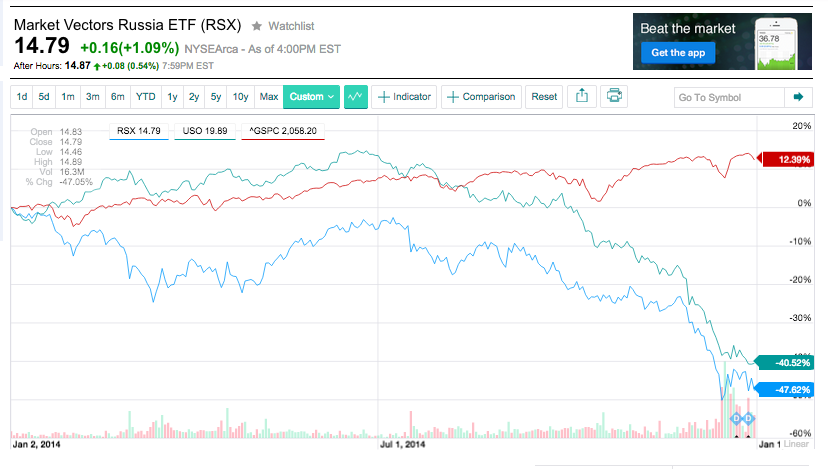
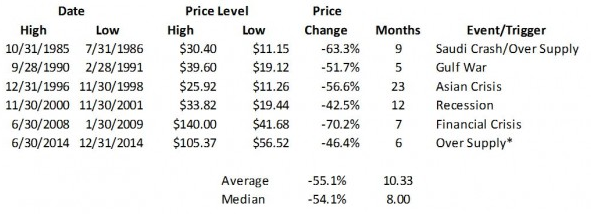

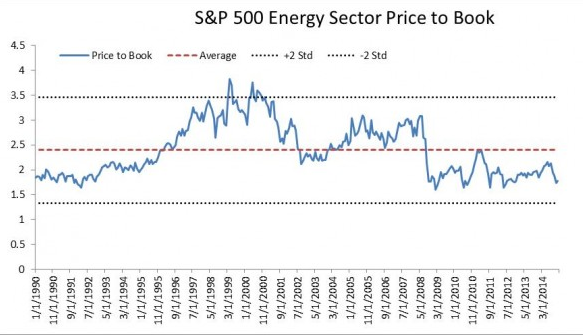
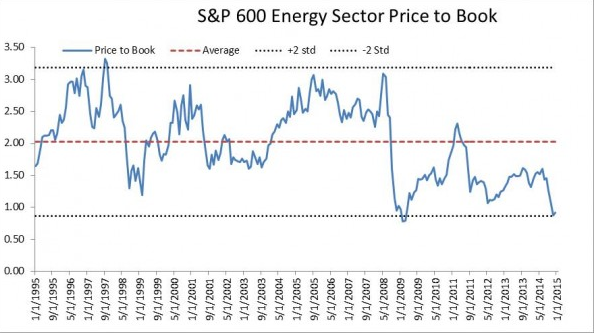
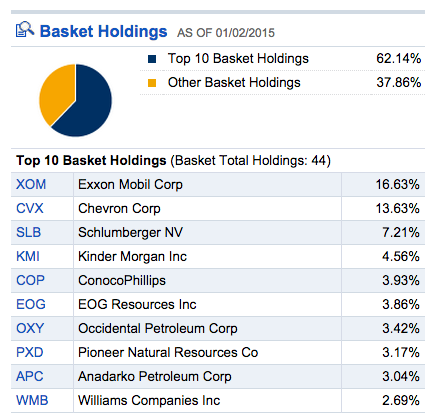
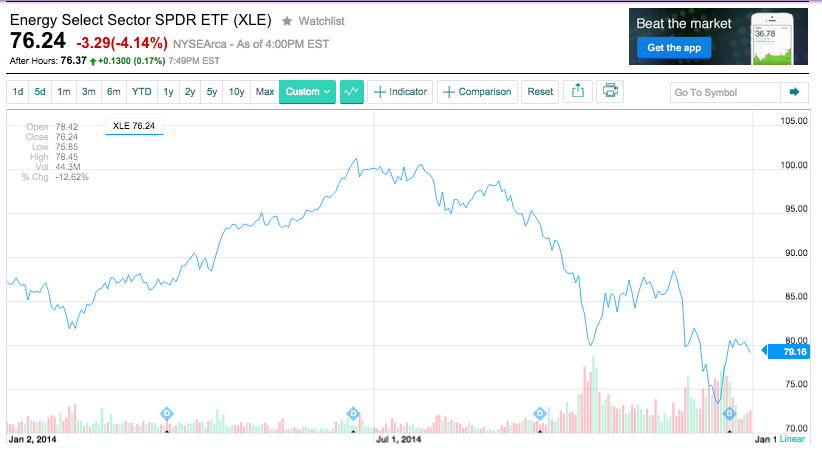
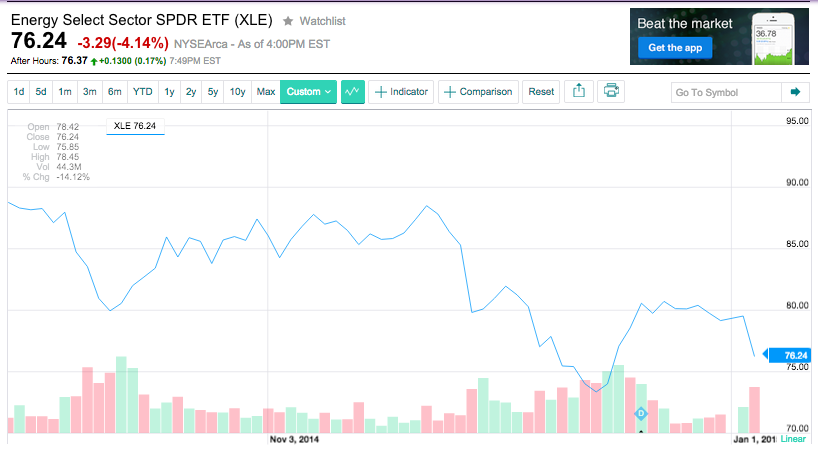
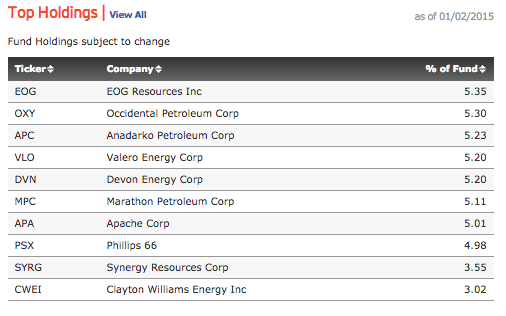
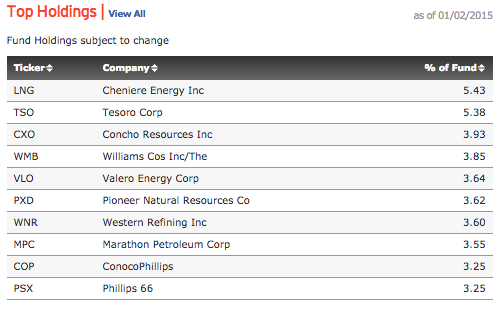
 Wabtec: An Industrial Leader Facing Growth Headwinds
Wabtec: An Industrial Leader Facing Growth Headwinds